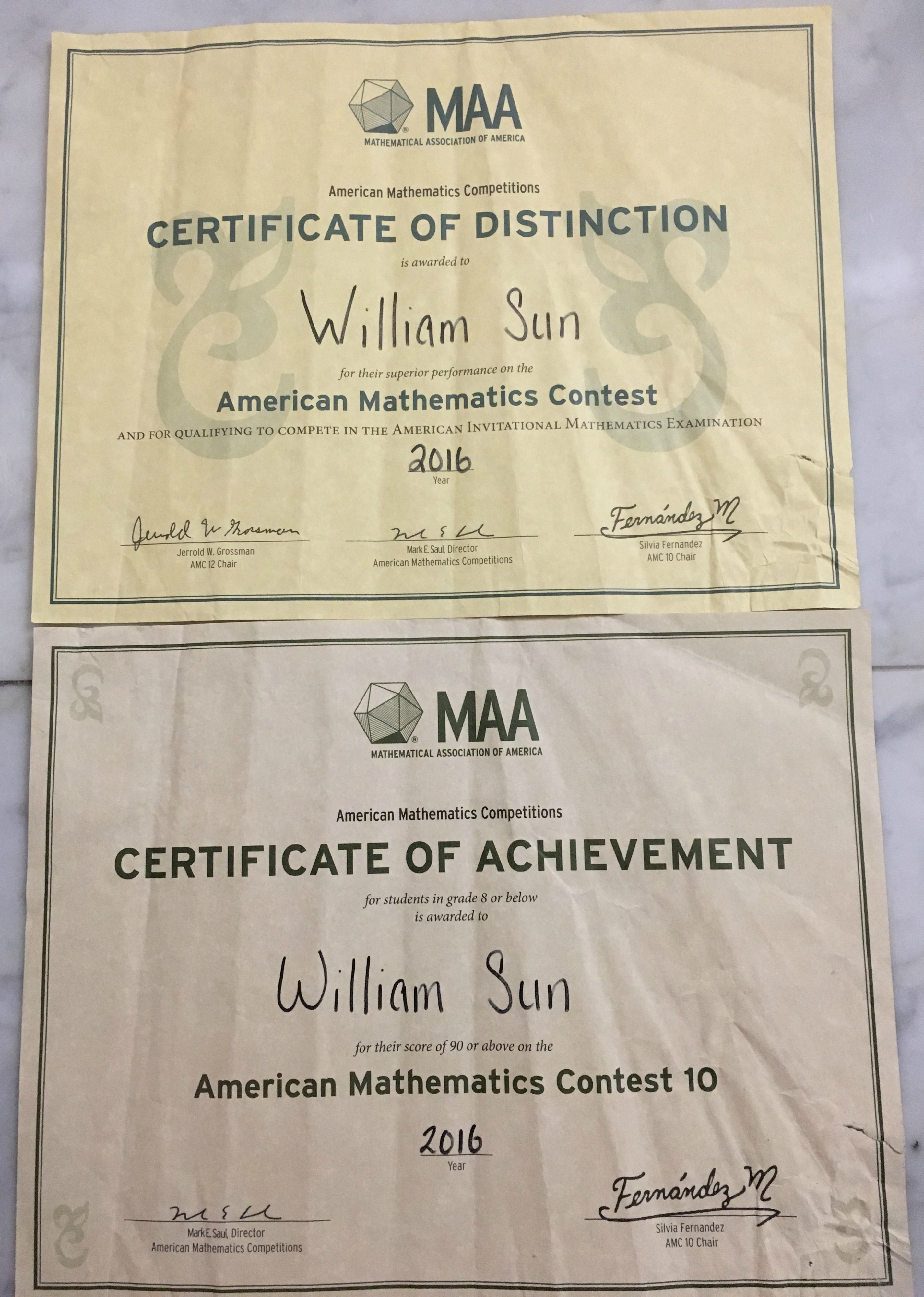
My certificates from qualifying for the AIME
The AIME, or the American Invitational Mathematics Examination, is a nationwide mathematics exam with about 11,000 competitors. To qualify, you have to take either the AMC 10 or AMC 12. Out of those who take the AMC 12, the top 5% of scores qualify for the AIME. Out of those who take the AMC 10, the top 2.5% qualify for the AIME. This means that out of the hundreds of thousands who take either exam, only about 3-4% qualify for the AIME. The AMC 10 tests on material from 10th grade and below, whereas the AMC 12 tests on material from 12th grade and below. Yet both exams are equally difficult, as there are many questions that show up in both exams, and to take the AMC 10, you have to be in 10th grade or below.
In 8th grade, as one of the youngest in my school to take the exam, I became the first in the school to qualify for the AIME, with a score of just 1 point above the qualifying threshold.
MoMath, or the Museum of Mathematics, hosts regional competitions at various locations for middle schoolers (6th-8th grade) every year across New York. At each tournament, teams of 5 are individually tested in advanced mathematics topics, and then the top 3 teams at each regional tournament move onto the final tournament, called the Tournament of Champions, which is held at the Museum of Mathematics. These tournaments have some of the best mathematicians in the state.
I competed in the MoMath regional tournaments and the Tournament of Champions in 7th and 8th grade (2015 and 2016), with our team placing first both years at the regional tournament, and 2nd at the Tournament of Champions when I was in 8th grade (2016).
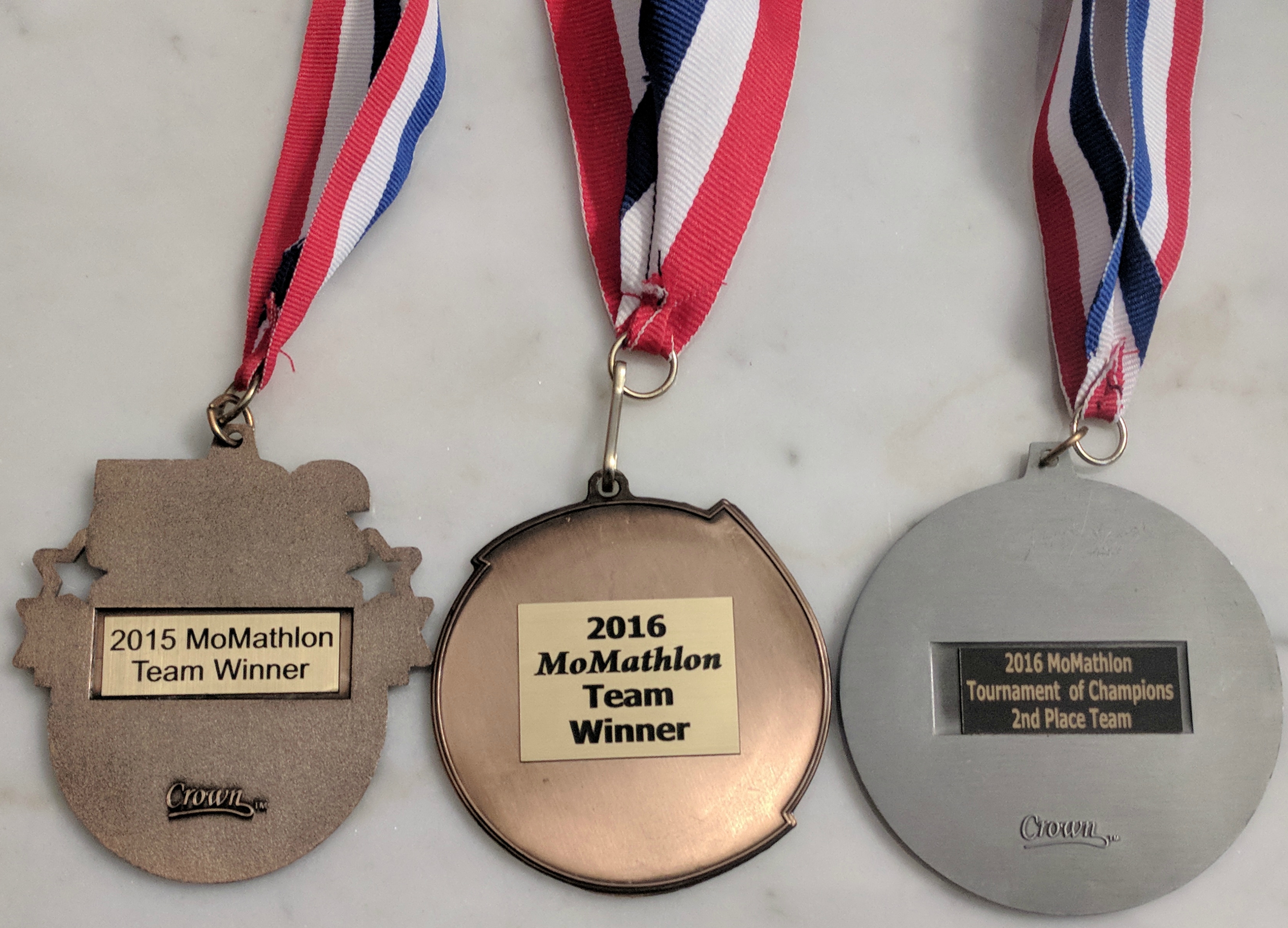
The backs of my MoMath competition medals
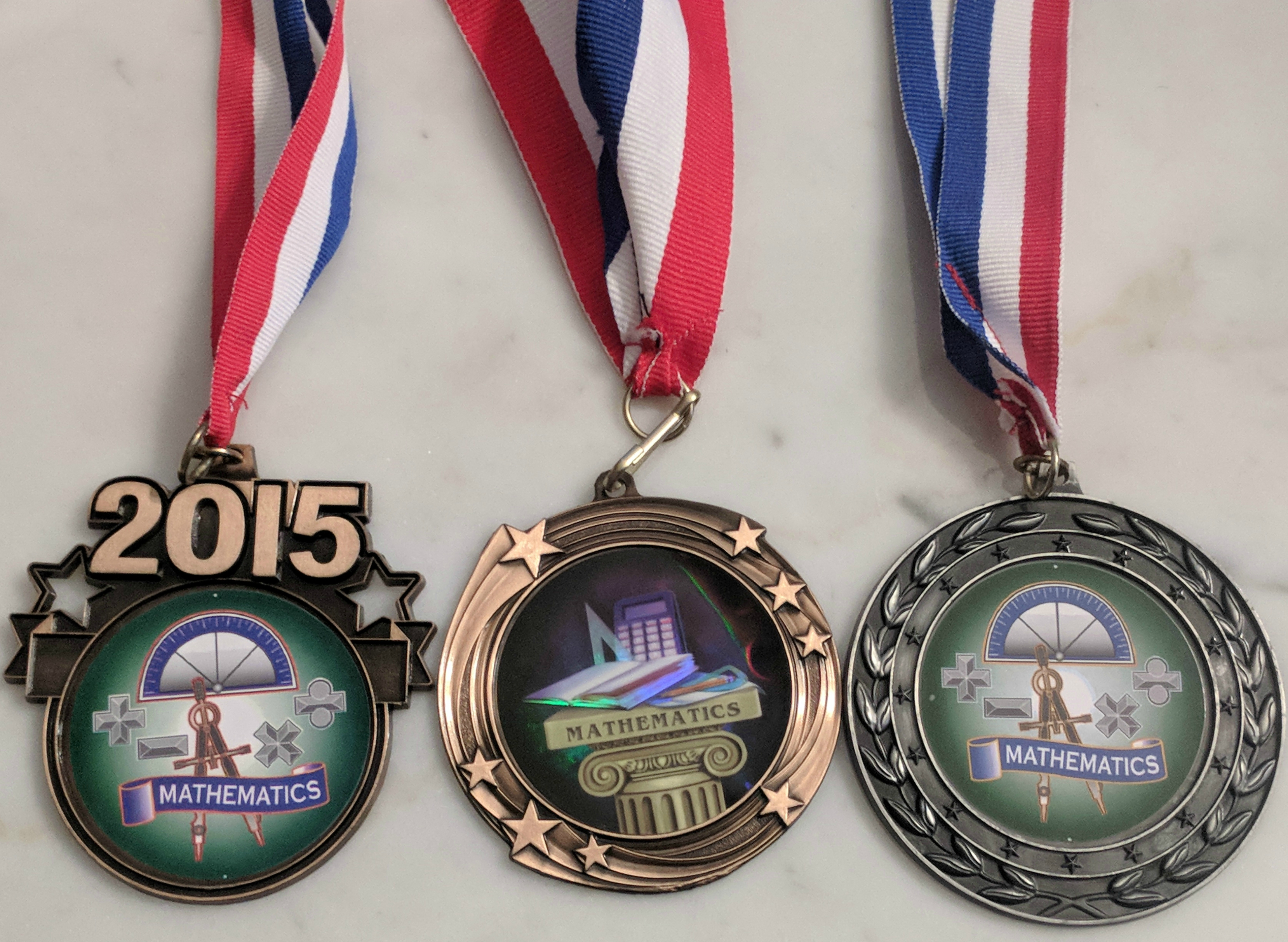
The fronts of my MoMath competition medals
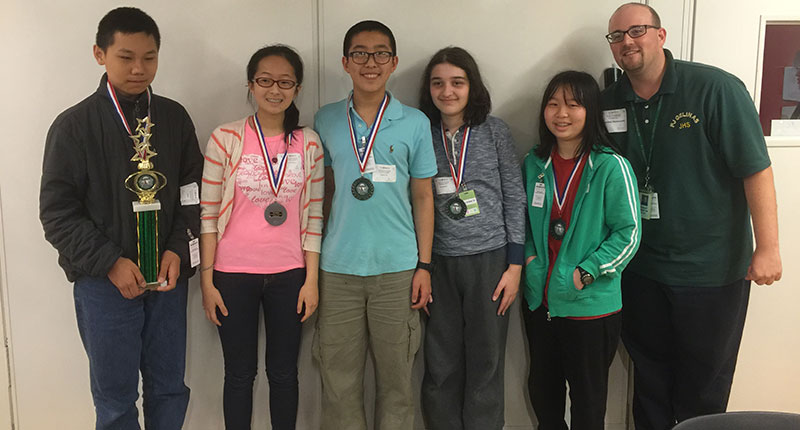
Our 2nd place team from MoMath Tournament of Champions 2016
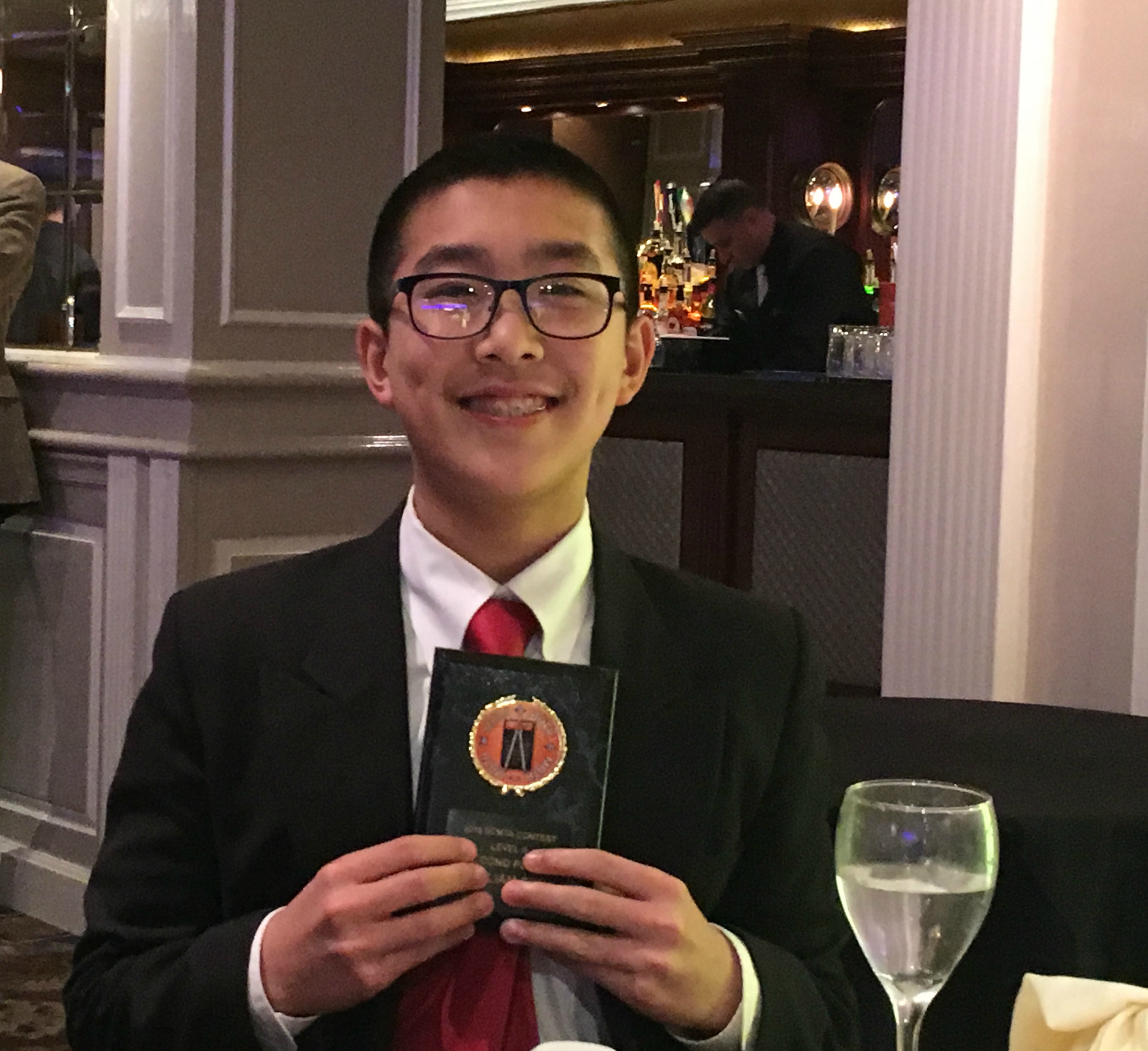
Me at the SCMTA Awards Ceremony 2016
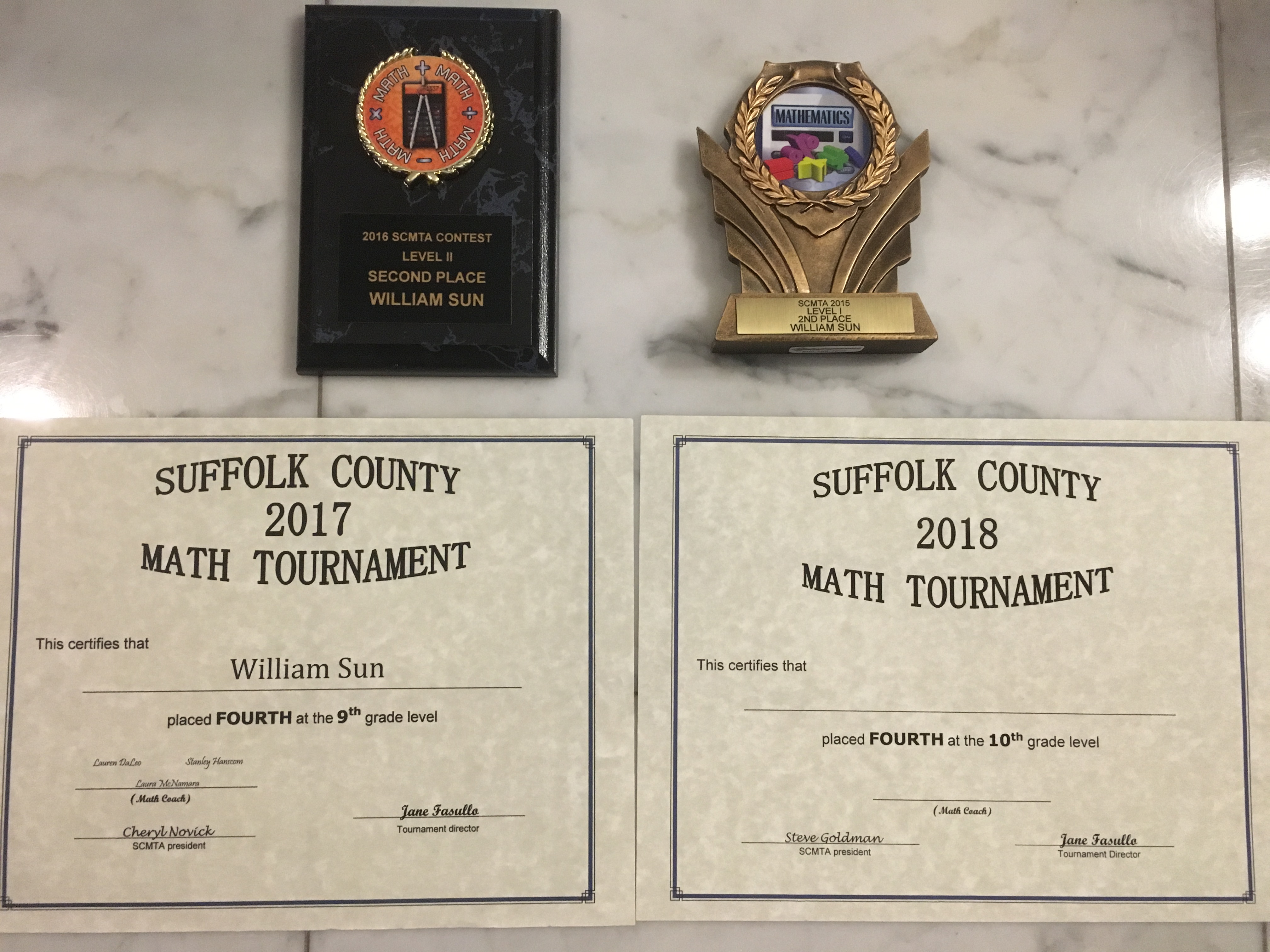
All of my SCMTA awards
The Suffolk County Math Teachers' Association, or SCMTA, holds several math competitions, one for middle schoolers at the end of the school year (the SCMTA contest), which takes place in school, and one in January for high schoolers (the SCMTA Senior Tournament), which takes place at the local community college. Each comptition is challenging and has competitors at all skill levels across Long Island.
I have competed at every tournament that SCMTA hosted. In 7th grade and 8th grade, I placed 2nd at the SCMTA tournament at Level I and II respectively. Level I covers topics in Algebra and earlier, whereas level II covers topics in Geometry and earlier. In 9th and 10th grade, I competed at the SCMTA Senior Tournament, where I placed fourth each year individually and placed 2nd in 10th grade as a team.
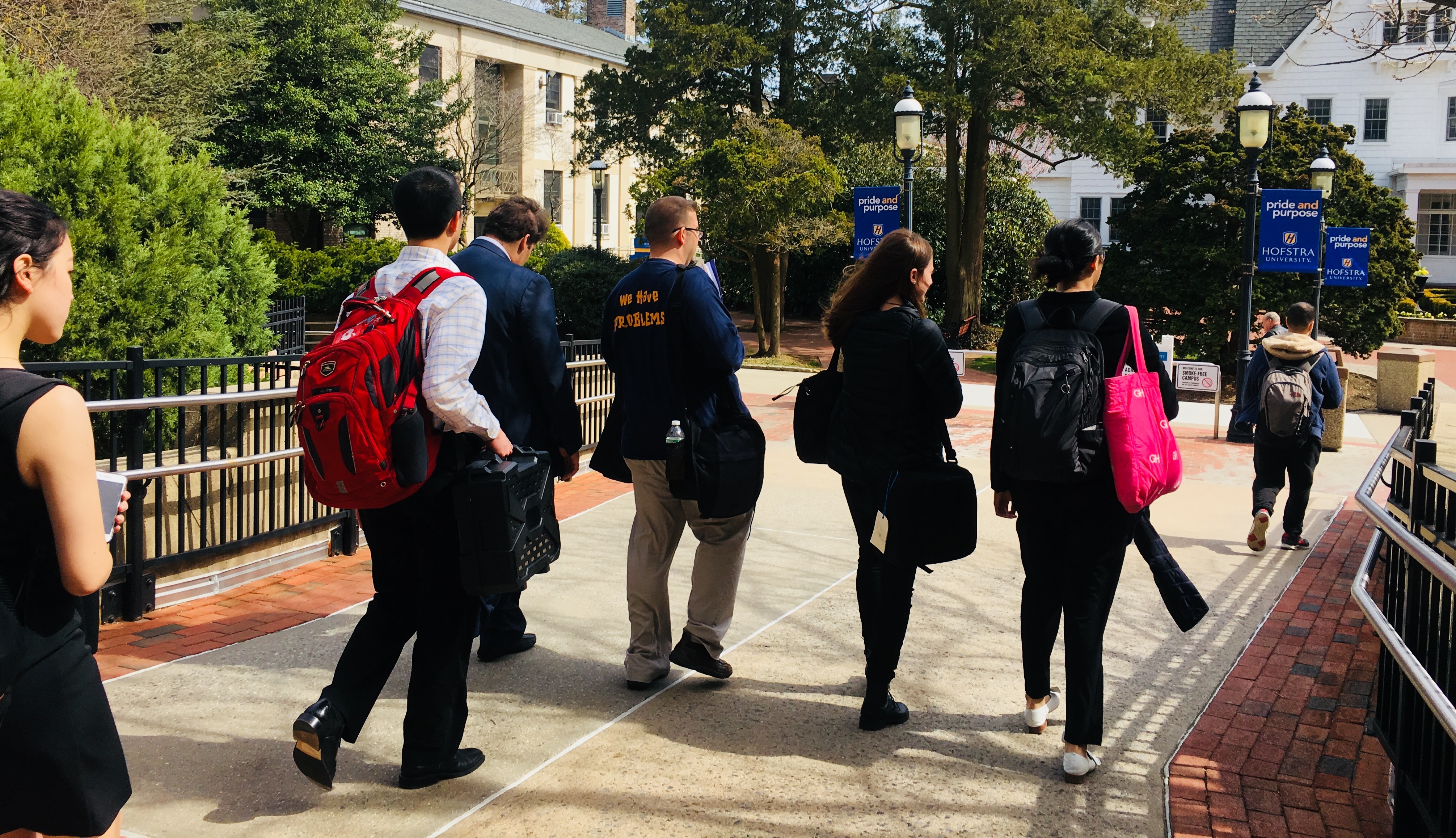
Me walking to the Math Fair presentation room
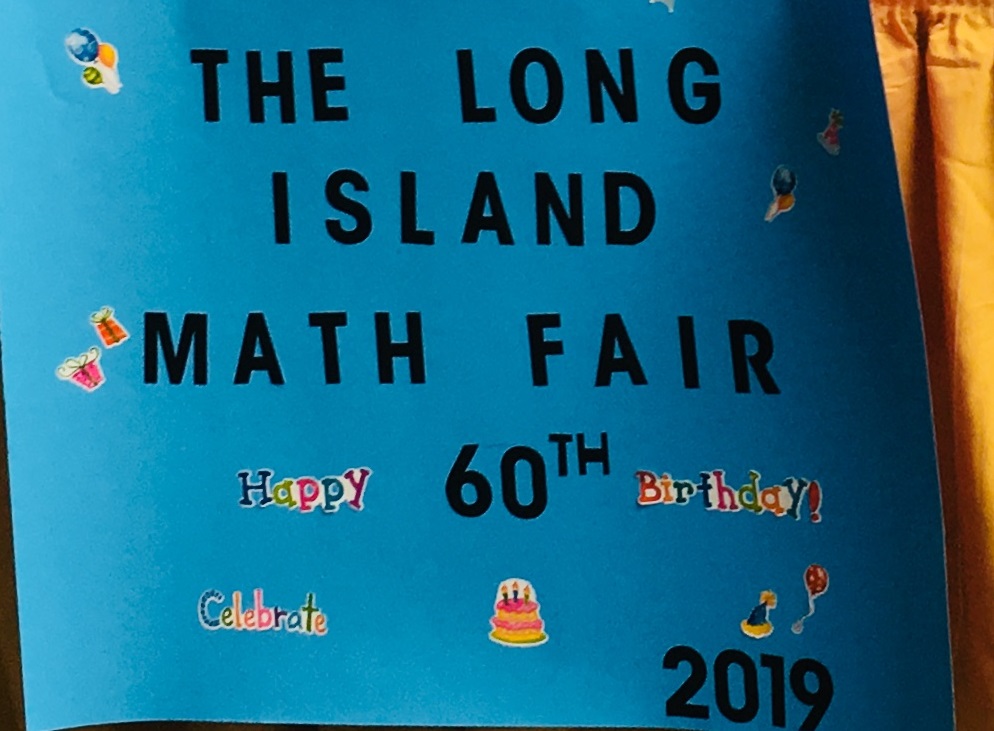
The 2019 LI Math Fair final round sign
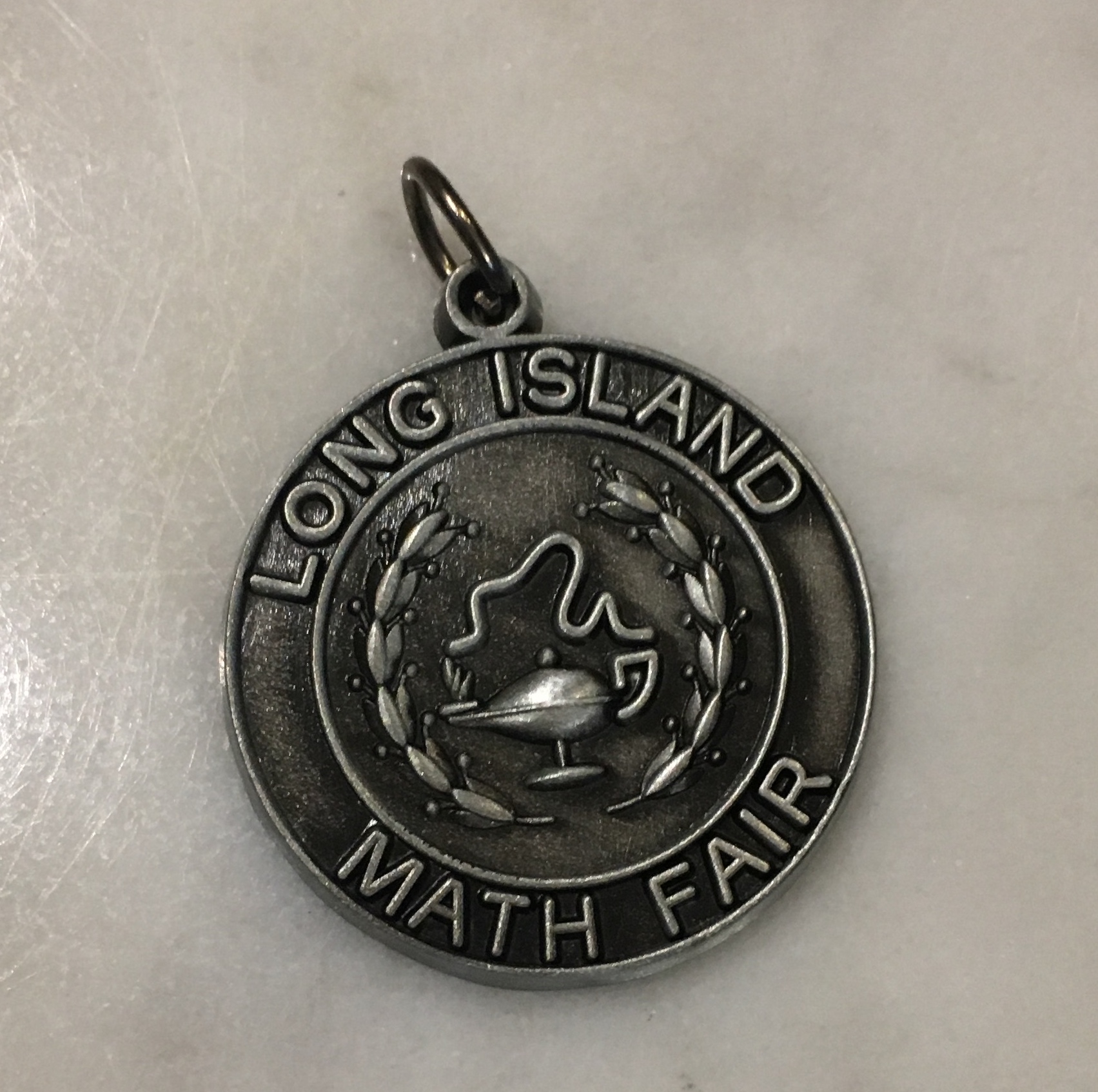
My 2nd place medal from the LI Math Fair final round
During the school year in 10th grade, I was accepted into, and participated in, the Mathematics Education, Research, and Instructional Technology (MERIT) Research program. The program recruits the best of the students in 10th grade or older who have already participated in the MERIT Math class (which requires a qualification itself) in the prior year or earlier. The program contains about 20 students, and each student does research into a specific math topic, in preparation for the LI math fair, where we present our research in a condensed 15 minutes, as well as submit a research paper.
The LI math fair has 2 rounds, the county round and the final round. Within each round, each competitor is placed in a room with 3-4 other competitors, all under one judge, and to move from the county round to the final round, a competitor has to have the best presentation in their room. The final round is scored similarly, with each competitor being placed into a room with 5 other competitors, competing for 2 gold medals, 2 silver medals, and 2 bronze medals (everyone in the final round gets some medal). Each person is scored by both their paper and their presentation.
During my time in the MERIT research program, I did research on the basic properties of p-adic numbers, as well as their applications in more basic scenarios than in Galois representation and topology. I qualified for the final round of the LI math fair, and won a silver medal in the final round. But the most rewarding part was hearing what other people had to say about my research. When presenting it to my math teacher, he was astounded at how much preparation I had put into my work, and how smoothly yet mind-boggling the proofs were, and my county round judge congratulated me by saying that I had the "best presentation [he] had ever seen in all 15 years of judging".
Our school's math team is a club of 40+ students that competes in many math competitions, from regional to state to national, and promotes math learning both in and outside school. In 11th grade, I was selected to be Math Team treasurer, and in 12th grade, I was selected to be the co-captain of the Math Team. Our team picture from 11th grade is shown below.
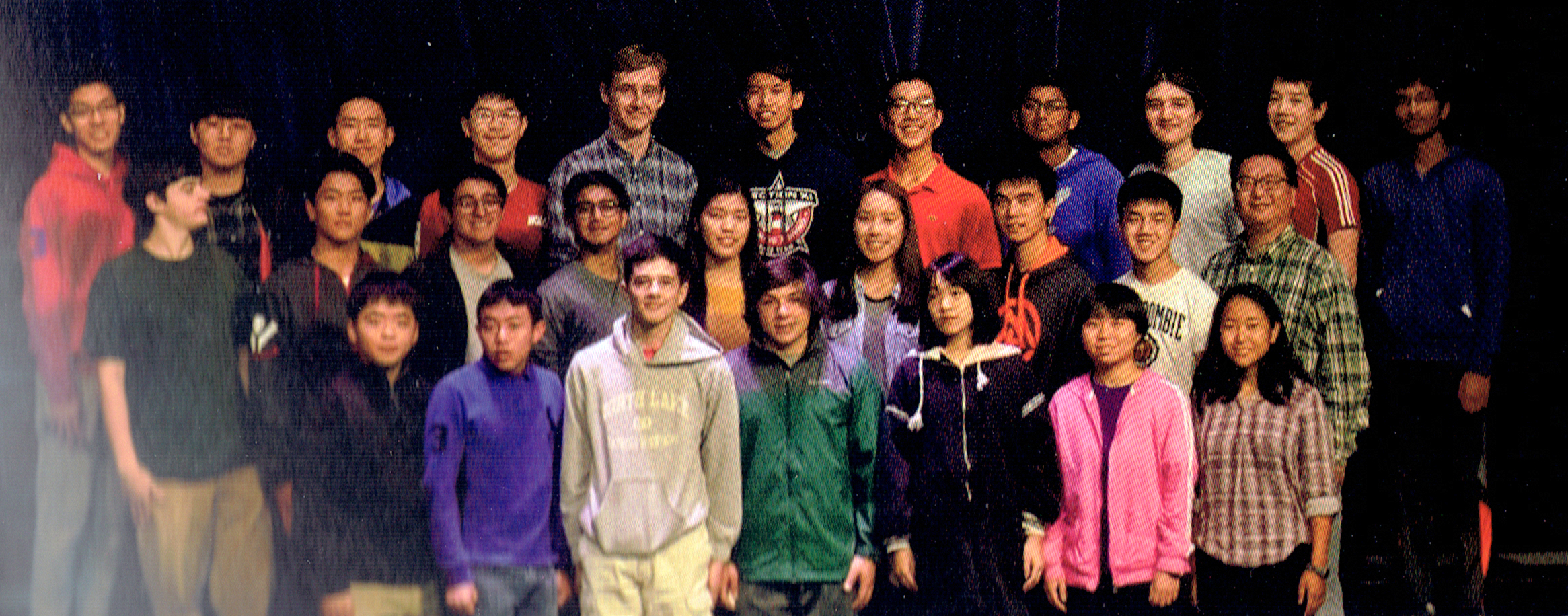
The Math Team group picture from 11th grade (2018-19)
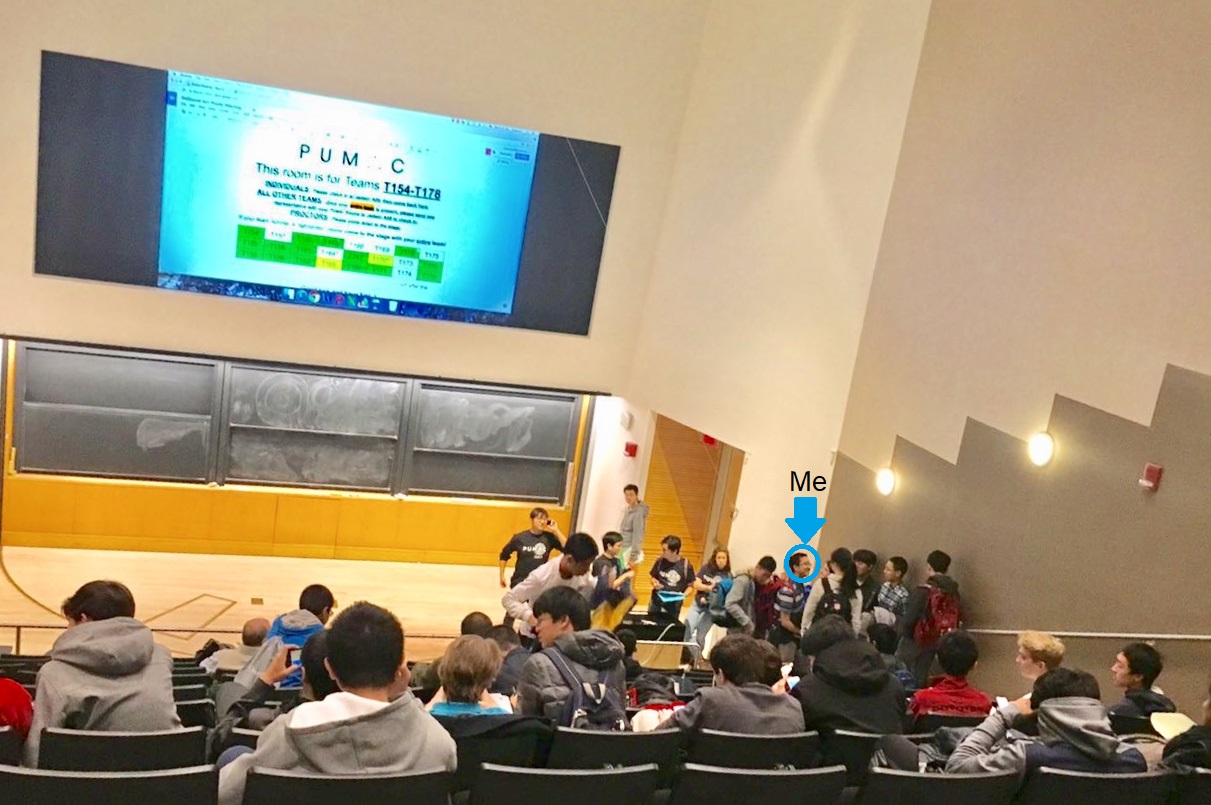
Our PUMaC team walking into the waiting room
Over the course of the years, I have competed in many math tournaments, the most prolific of which were HMMT (Harvard-MIT Math Tournament) and PUMaC (Princeton University Math Competition), run by a joint Harvard-MIT Committee and Princeton, respectively. HMMT consisted of 6-person teams, and PUMaC consisted of 8-person teams, but the format was similar. We first got severa tests in specific subject areas, with each designated area (i.e. Algebra, Geometry, Combinatorics, Number Theory) having its own test. Then, there was a team round, with questions that we answer as a team, and then the final timed round, which consists of several sets of 6 questions which increase in difficulty. I was the captain of my team for HMMT as well, and I was in charge of leading the team and organizing what questions each person did in the team and final rounds.
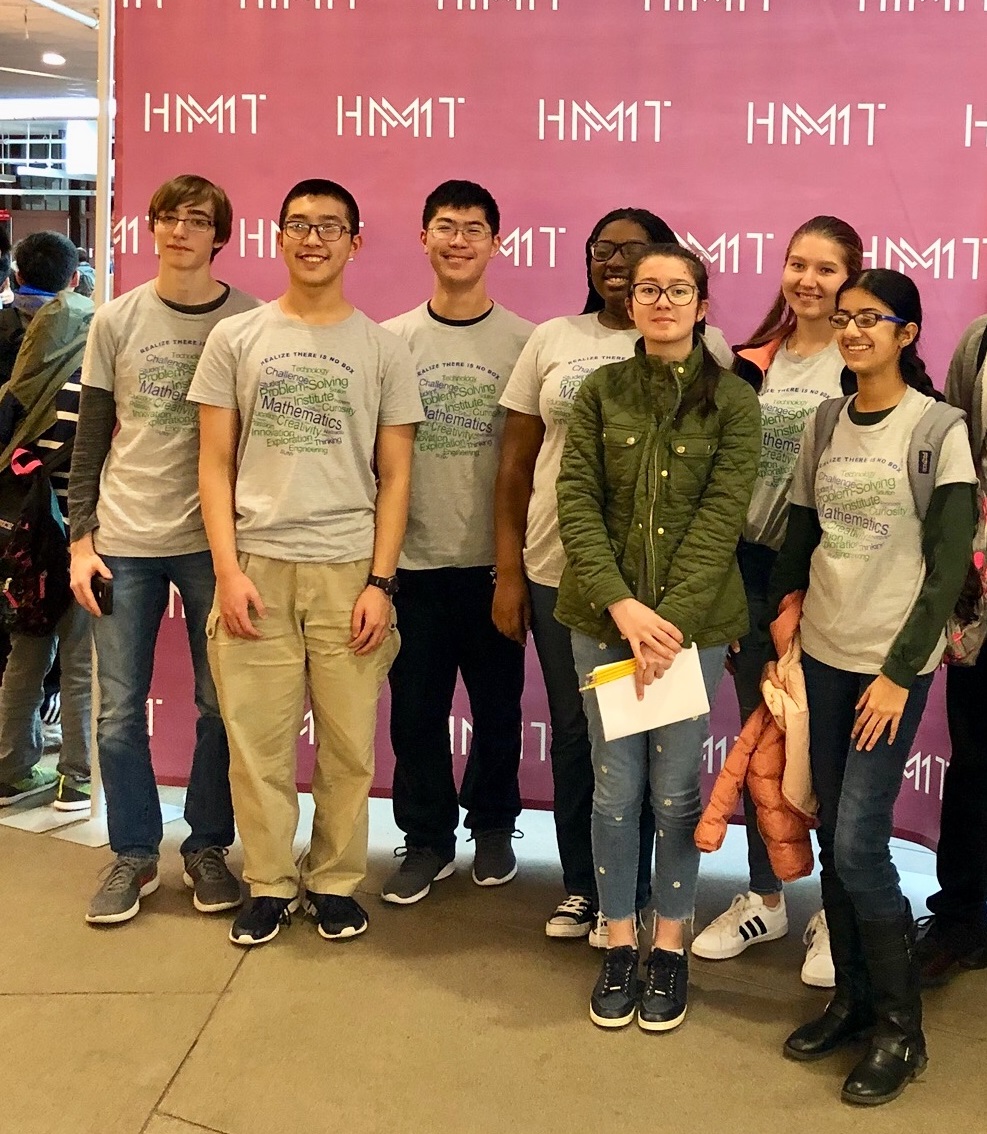
Our HMMT team (plus one competitor from a different team)
Seeking to learn more about math outside of school, I applied for the Stanford Pre-Collegiate Studies Program under the course Number Theory. I was accepted, and stayed at Stanford for 3 weeks taking what was essentially the college Number Theory course. We learned about set theory, modular arithmetic, quadratic residues, and ultimately, Fermat's Last Theorem.
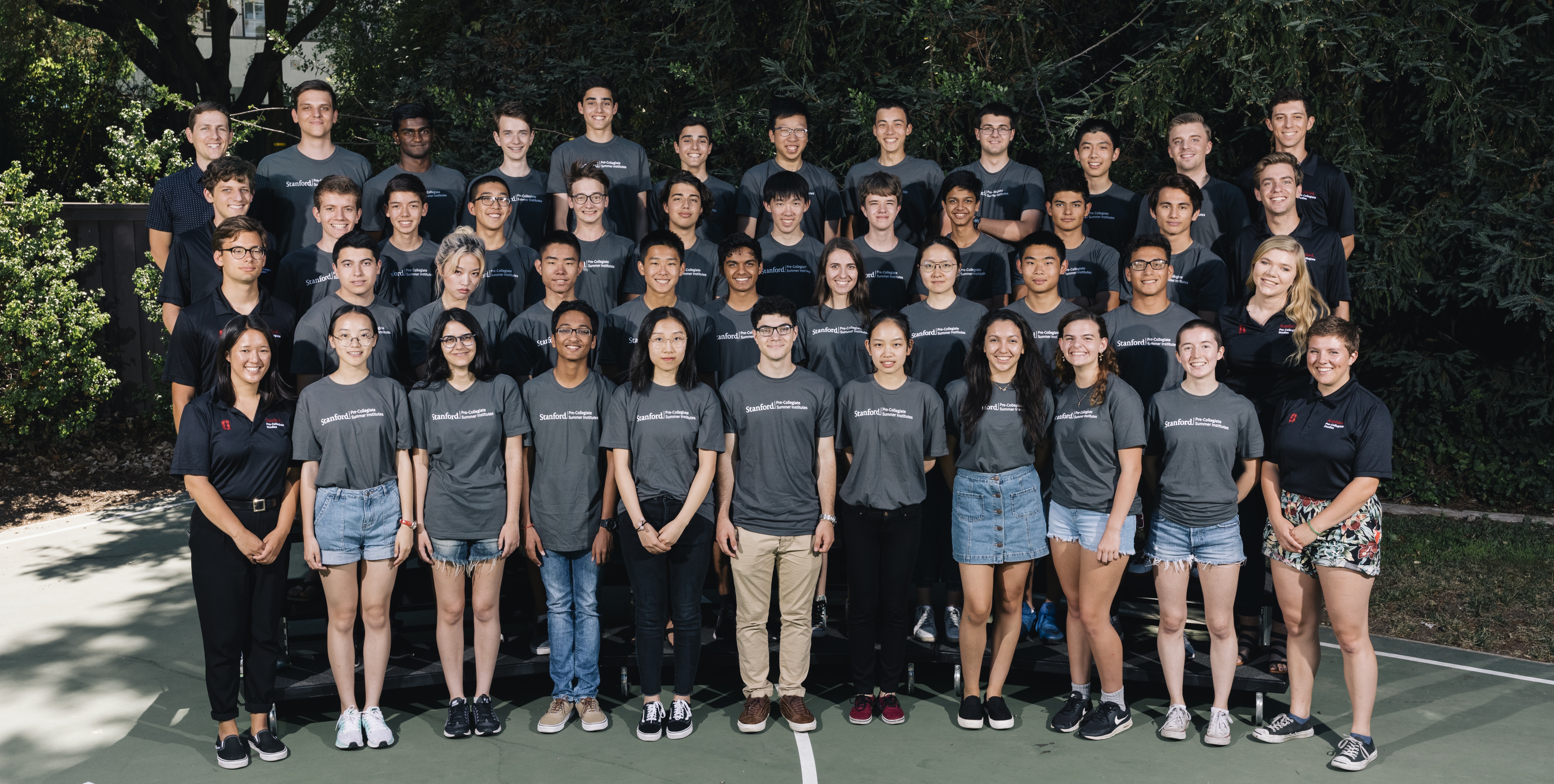
The group picture for the SPCS Theta house, 2018 Session 2
Seeking to learn more about math outside of school, I talked to some PhD students in the Math Department at Stony Brook University, and some were willing to give me lessons in college topics. I first was taught by Dr. Santai Qu, who taught me advanced calculus (i.e. delta-epsilon language) and some basic Linear Algebra before he became too busy to teach me. After that, I was taught by Jiahao Hu, who still teaches me to this day, who taught me topics like Abstract Algebra (i.e. Vectorspaces, First Isomorphism Theorems) and more advanced Linear Algebra (i.e. Euclidean spaces, Gram-Schmidt Process).

A picture of the blackboard during math lessons